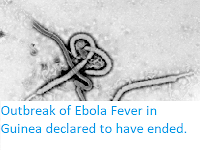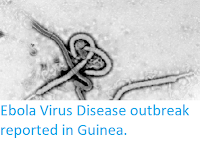The World Health Organization has confirmed a case of Wild Poliovirus infection in Malawi. The case, a three-year-old girl, from Central Constituency in Lilongwe District, Central Region, developed acute flaccid paralysis on 19 November 2021. Two stool specimens were collected for testing on 26 and 27 November, and were received at the Regional Reference Laboratory, at the National Institute of Communicable Disease in South Africa, on 14 January 2022, and then forwarded to the United States Centers for Disease Control and Prevention. The Virus causing the infection has now been confirmed to be Wild Poliovirus Type 1, which is endemic to Pakistan and Afghanistan, and not Wild Poliovirus Type 2, which was formerly endemic to many parts of Africa but is now believed to have been eradicated.
Sequencing of the virus conducted by the National Institute of Communicable Disease on 2 February, and the United States Centers for Disease Control and Prevention on 12 February confirmed this case as Wild Poliovirus Type 1. Analysis shows that the current Wild Poliovirus Type 1 isolate in Malawi is genetically linked to a Pakistan sequence detected in 2020 in Sindh Province.
Africa was declared free of indigenous Wild Polio in August 2020 after eliminating all forms of Wild Polio from the region, and in Malawi, the last clinically confirmed Wild Poliovirus case was reported in 1992.
A Global Polio Eradication Initiative Rapid Response Team has been sent to Malawi to support coordination, surveillance, data management, communications, and operations. Partner organizations also sent teams to support emergency operations and innovative vaccination campaign solutions.
Polio is a highly infectious disease, caused by Wild Poliovirus, an RNA Ribovirus that invades the nervous system and can cause permanent paralysis (approximately one in 200 infections) or death (approximately 2-10% of paralysed cases). The virus is transmitted by person-to-person, mainly through the faecal-oral route or, less frequently, by a common vehicle (for example, contaminated water or food).
Two of the three types of Wild Poliovirus have been eradicated (Wild Poliovirus 2 and Wild Poliovirus 3), with ongoing global efforts to eradicate Wild Poliovirus 1. Currently, wild poliovirus is endemic in two countries: Pakistan and Afghanistan. The detection of Wild Poliovirus 1 outside the two countries where the disease is endemic demonstrates the continuous risk of international spread of the disease until every corner of the world is free of Wild Poliovirus 1.
The risk at the national level in Malawi is assessed as high given the presence of high population density, low vaccination coverage (less than 80%) in many districts and lack of a catch-up campaign for more than six years, accumulated susceptible populations, suboptimal acute flaccid paralysis surveillance, and lack of environmental surveillance, that may be affecting the ability to detect cases. Additionally, the country is currently affected by tropical storm Ana which may impact the country’s response capacity by impairing Polio supplementary immunization activities and surveillance activities. The risk at the regional level is assessed as moderate given the significant population movement between Mozambique and Malawi, suboptimal vaccination coverage in the neighbouring countries, and suboptimal surveillance activities.
See also...



Follow Sciency Thoughts on Facebook.
Follow Sciency Thoughts on Twitter.




